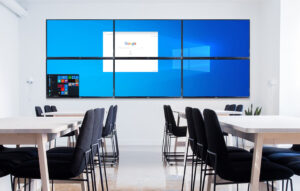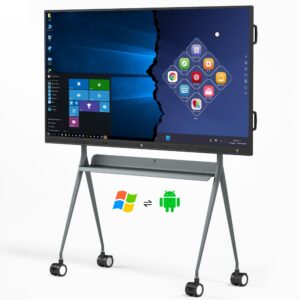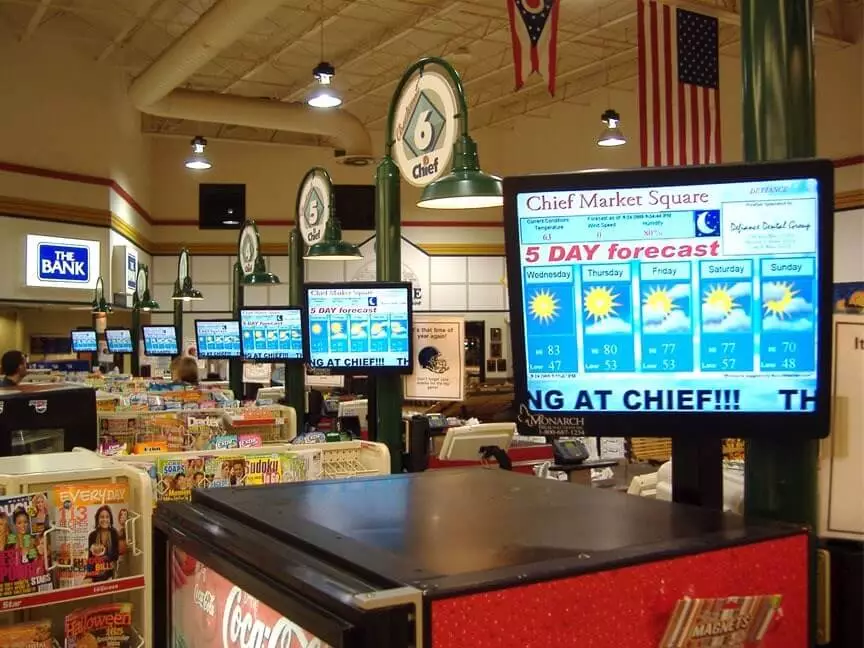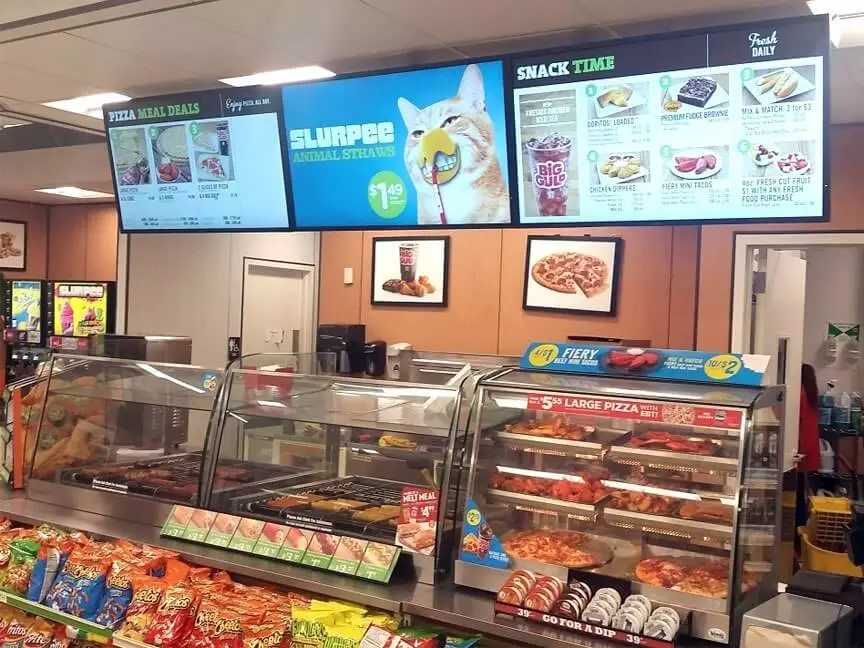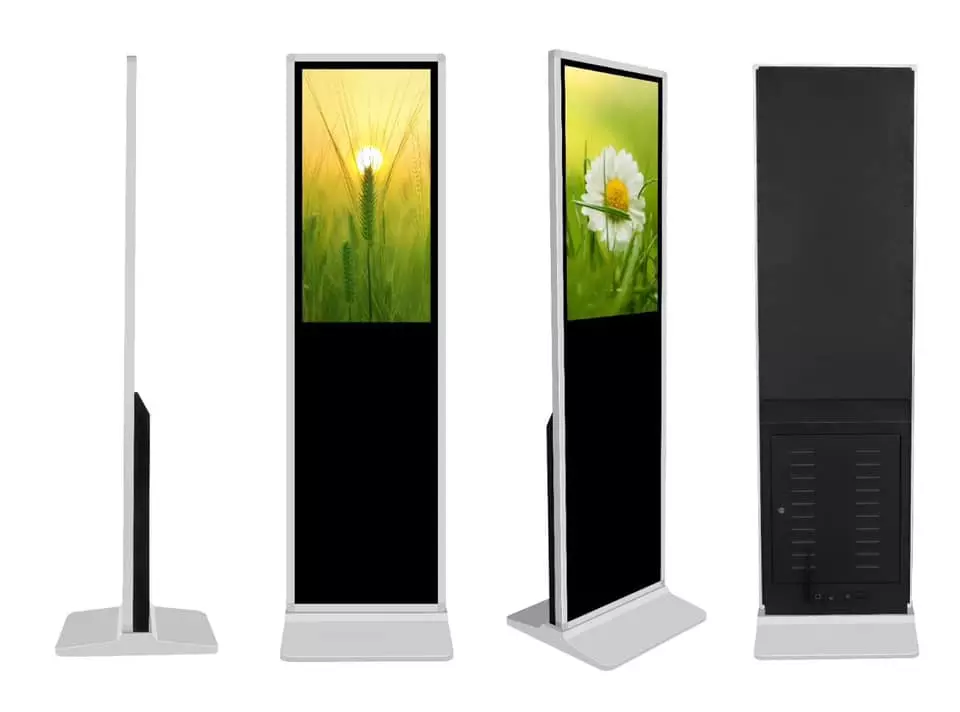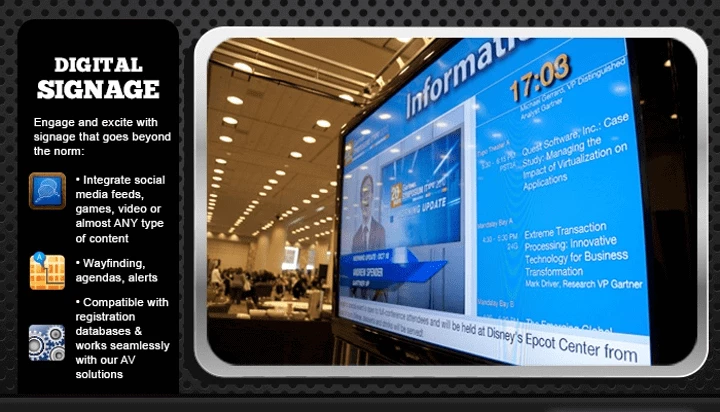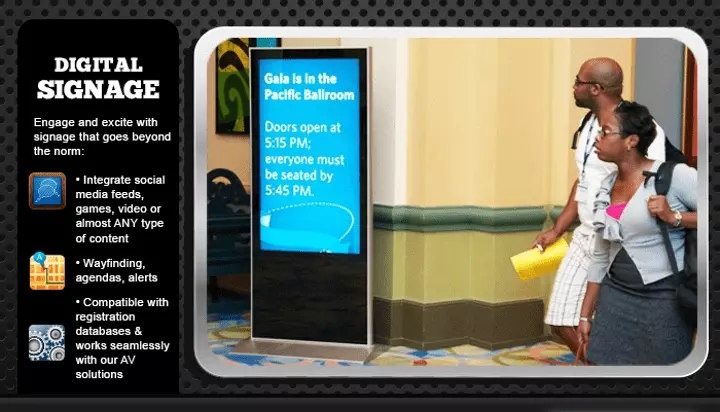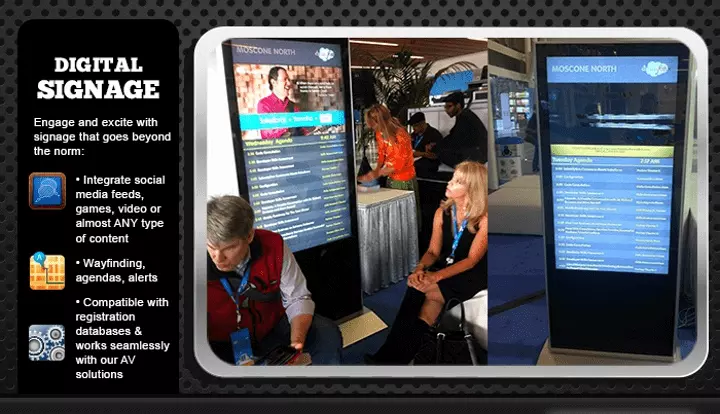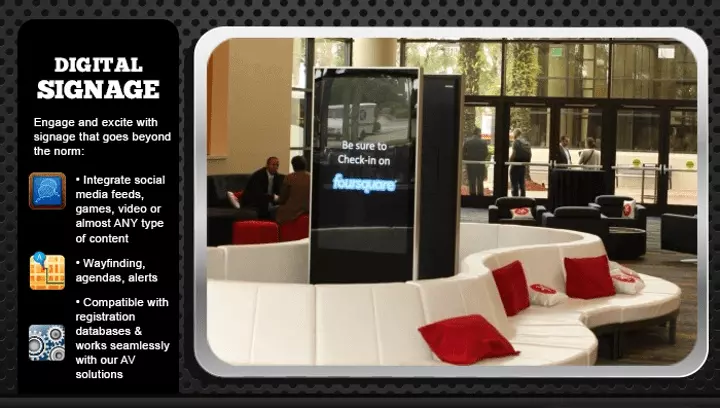Information Digital Signage Display Kiosk, often simply referred to as a Digital Signage Kiosk, is a self-contained, standalone unit equipped with a digital display screen, interactive touch capabilities, and content management software. These kiosks are designed to deliver information, interactive content, and services in a variety of public and commercial settings. Let’s explore what an Information Digital Signage Display Kiosk is, why it is used, and where it finds applications:
What is an Information Digital Signage Display Kiosk?
An Information Digital Signage Display Kiosk typically consists of the following components:
- Display Screen: It features a high-quality LCD or LED display screen that can vary in size, commonly ranging from 32 inches to 75 inches or larger.
- Interactive Touchscreen: The kiosk is equipped with a touchscreen interface (capacitive or resistive) that allows users to interact with the content displayed on the screen using their fingers or a stylus.
- Media Player: A built-in media player or content management system drives the display, enabling the kiosk to show multimedia content, including images, videos, text, and interactive applications.
- Enclosure: The kiosk is housed within a durable and secure enclosure, protecting the components from environmental factors and potential vandalism.
- Connectivity: Digital signage kiosks may include network connectivity options such as Wi-Fi, Ethernet, and Bluetooth for remote content updates and monitoring.
Why Use an Information Digital Signage Display Kiosk?
- Information Dissemination: Kiosks are used to provide information to the public or customers, including news, announcements, directions, event schedules, and more.
- Interactive Engagement: Touchscreen kiosks enable users to interact with the displayed content, making them ideal for interactive maps, wayfinding, surveys, and self-service applications.
- Efficient Customer Service: Businesses and organizations use kiosks to enhance customer service by providing quick access to information, such as product details, inventory availability, and FAQs.
- Branding and Advertising: Kiosks can serve as branding tools and advertising platforms, promoting products, services, and promotional offers.
- Queue Management: In healthcare, government offices, and service centers, kiosks help manage queues by displaying ticket numbers, waiting times, and service status.
- Digital Signage: Kiosks are a form of digital signage that offers dynamic and attention-grabbing content in public spaces, including retail stores, airports, malls, and transportation hubs.
Where Are Information Digital Signage Display Kiosks Used?
- Retail: Retailers use kiosks for in-store advertising, product information, interactive catalogs, and self-checkout stations.
- Hospitality: In hotels and resorts, kiosks offer guests information on amenities, maps, dining options, and local attractions.
- Transportation: Airports, train stations, and bus terminals use kiosks for flight and schedule information, wayfinding, and ticketing.
- Healthcare: Hospitals and clinics deploy kiosks for patient check-ins, appointment scheduling, and health information.
- Government: Government agencies use kiosks for public information, service payments, and document printing.
- Education: Kiosks in educational institutions assist with campus navigation, event promotion, and self-service student services.
- Malls and Shopping Centers: Kiosks within shopping centers provide directories, promotions, and interactive shopping experiences.
- Entertainment: Kiosks at movie theaters, amusement parks, and tourist attractions offer ticketing and visitor information.
- Trade Shows and Exhibitions: At events and trade shows, kiosks facilitate attendee registration, wayfinding, and exhibitor information.
- Financial Services: Banks and credit unions deploy kiosks for basic banking transactions, account inquiries, and ATM functions.
Information Digital Signage Display Kiosks play a pivotal role in enhancing customer engagement, providing convenient access to information, and streamlining various processes across a wide range of industries. Their versatility, interactive capabilities, and potential for customization make them valuable tools for improving customer experiences and communication.
- Museums and Cultural Institutions: Museums and galleries use kiosks to provide visitors with detailed information about exhibits, interactive educational content, and virtual tours.
- Libraries: Libraries deploy kiosks for self-checkout of books, digital catalog searches, and digital storytelling experiences.
- Automotive Dealerships: Car dealerships use kiosks to showcase vehicle information, pricing, and financing options, allowing customers to explore car models and features.
- Tourism and Hospitality: Tourism centers and visitor information kiosks offer travelers maps, local attractions, accommodation options, and event listings.
- Interactive Advertising: Kiosks serve as interactive advertising platforms in public spaces, capturing the attention of passersby with engaging content and promotional offers.
- Fitness Centers: Gyms and fitness centers use kiosks for member check-ins, class schedules, and fitness tracking.
- Food and Beverage Ordering: In quick-service restaurants, food courts, and cafes, kiosks allow customers to place orders, customize their meals, and make payments.
- Real Estate: Real estate agencies place kiosks in storefronts to display property listings with images, videos, and detailed descriptions, making them accessible even after business hours.
- Information Hubs: Kiosks function as information hubs at public events, providing attendees with event schedules, maps, and speaker details.
- Safety and Emergency Services: Kiosks in public spaces can be used for emergency alerts, safety instructions, and guidance during emergencies or disasters.
- Transportation Ticketing: Public transportation systems use kiosks for ticket sales, fare information, and route planning.
- Voting and Elections: Some regions use electronic voting kiosks to facilitate voting in elections, making the process more efficient and accessible.
- Gaming and Entertainment: Gaming arcades and entertainment venues incorporate kiosks for game selection, card recharge, and prize redemption.
- Customer Feedback: Kiosks in retail stores and businesses collect customer feedback and conduct surveys to gauge satisfaction and improve services.
- Environmental Impact: In an effort to reduce paper waste, some organizations use kiosks for electronic receipts and ticketing.
- Accessibility: Kiosks can be equipped with accessibility features, such as screen readers and larger touch targets, to ensure usability for individuals with disabilities.
The adaptability of Information Digital Signage Display Kiosks to diverse applications continues to make them invaluable assets in today’s digital world. Their capacity to deliver information, engage users, streamline processes, and enhance customer experiences underscores their importance in a wide range of industries and public spaces. As technology advances, these kiosks are likely to become even more interactive, intuitive, and integrated with other systems to provide seamless user experiences.
- Healthcare Self-Service: In healthcare settings, kiosks enable patients to check in for appointments, update personal information, view medical records, and access health-related resources.
- Employee Services: Within corporate environments, kiosks provide employees with self-service options for HR-related tasks, such as time tracking, benefits enrollment, and training.
- Interactive Maps: At large facilities like universities, airports, and convention centers, kiosks offer interactive maps and directories for efficient navigation.
- Emergency Information: Kiosks can display emergency evacuation plans, safety instructions, and real-time updates during crises, ensuring the safety of occupants.
- Feedback and Surveys: Businesses and organizations use kiosks to gather feedback and conduct surveys, helping to improve services and products.
- Payment and Transactions: Kiosks in various industries, including retail and hospitality, facilitate secure payments, self-checkout, and ticket purchasing.
- Social Media Integration: Some kiosks integrate with social media platforms, allowing users to share content or check in at specific locations.
- Self-Service Ordering: In the food industry, self-service kiosks allow customers to place orders, customize menu items, and pay for their meals.
- Data Collection and Analytics: Kiosks can collect data on user interactions and engagement, providing valuable insights for businesses to refine content and strategies.
- Language Translation: Multilingual kiosks offer language translation services, benefiting tourists and non-native speakers.
- Visitor Registration: Offices, campuses, and government facilities use kiosks for visitor registration, providing badges and access information.
- Inventory and Stock Information: Retailers use kiosks to provide customers with real-time inventory and stock availability for products.
- Event Ticketing: At theaters, concert venues, and sports arenas, kiosks offer on-site event ticketing and seat selection.
- Gaming and Amusement: Amusement parks and gaming arcades employ kiosks for game credits, prize redemption, and queue management.
The versatility of Information Digital Signage Display Kiosks extends across various sectors, from healthcare and government to retail, hospitality, and entertainment. As technology continues to evolve, these kiosks will likely incorporate advanced features such as artificial intelligence (AI), facial recognition, and improved user interfaces, further enhancing their functionality and usability. Whether serving informational, transactional, or interactive purposes, kiosks remain essential tools for modern businesses, organizations, and public spaces to provide efficient services and engage with their audiences.


